Art and Games
video game sketches
ongoing, video games (bitsy game engine)
Short retro-game sketches in game engine Bitsy.org.
ORACLE I
2023, video (ChatGPT, Runway AI, custom sound hardware)
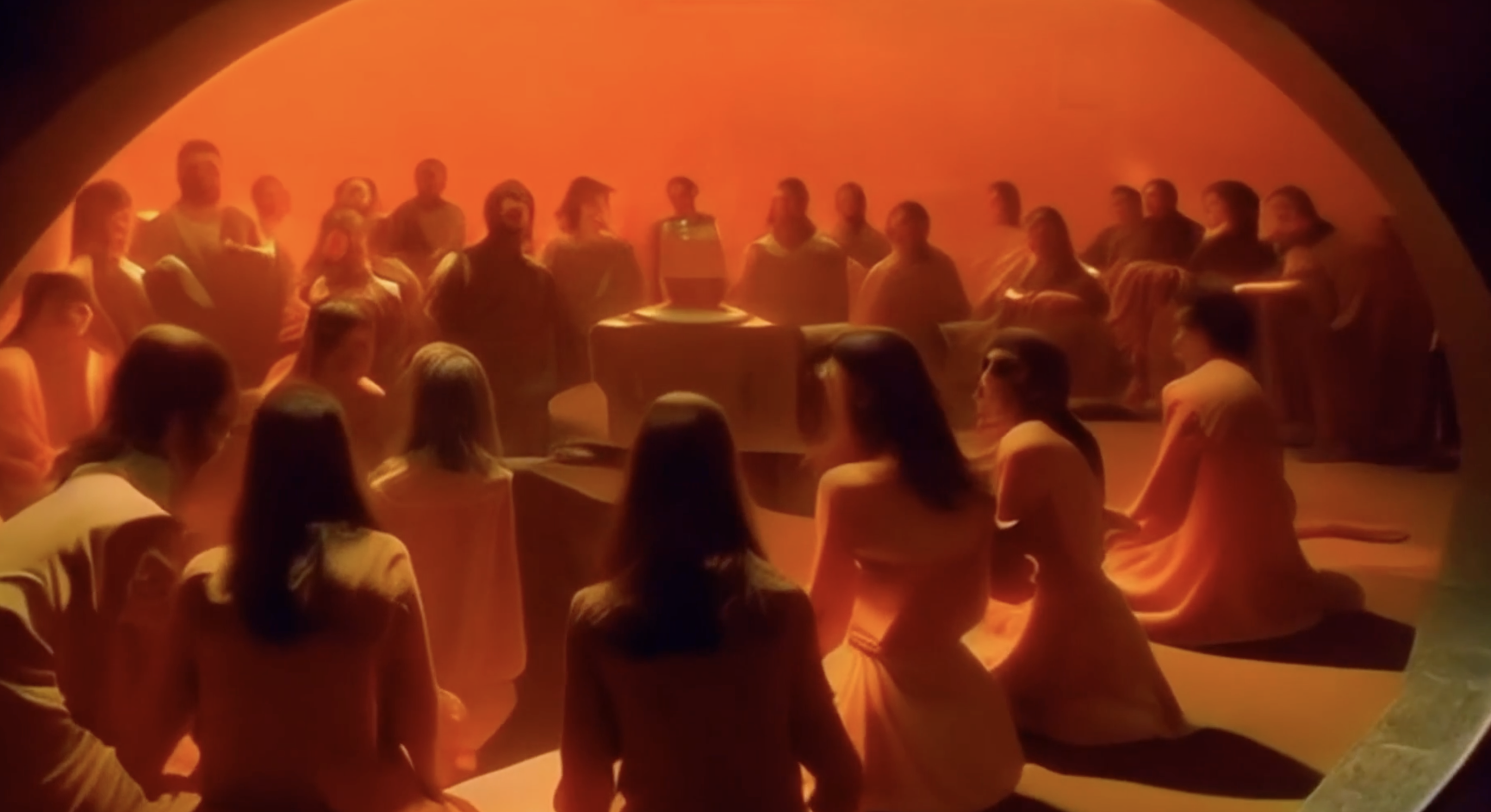
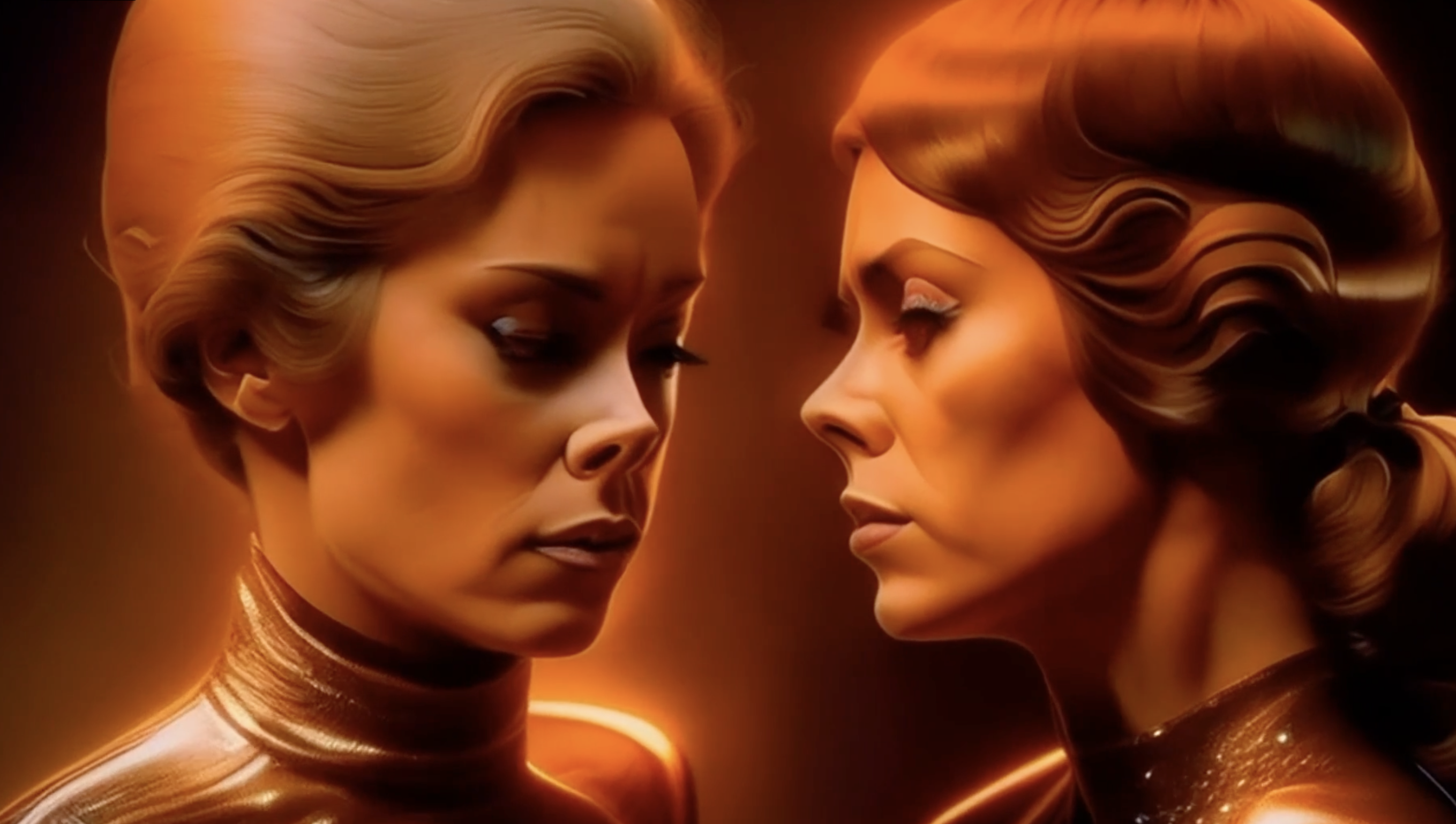
Oracle I was generated using AI video generation software using prompts from ICHING (Book of Changes) passages alongside stylistic markers of 1970s sci-fi cinema. The resultant videos are edited together to create a retro-futuristic trailer for a speculative film exploring a future of the past, where hollow beings flit in and out of setpieces referencing forever wars, forbidden love, and techno-colonialism.
I CHING ONLINE
2016-present, website (HTML5, Processing, p5.js)
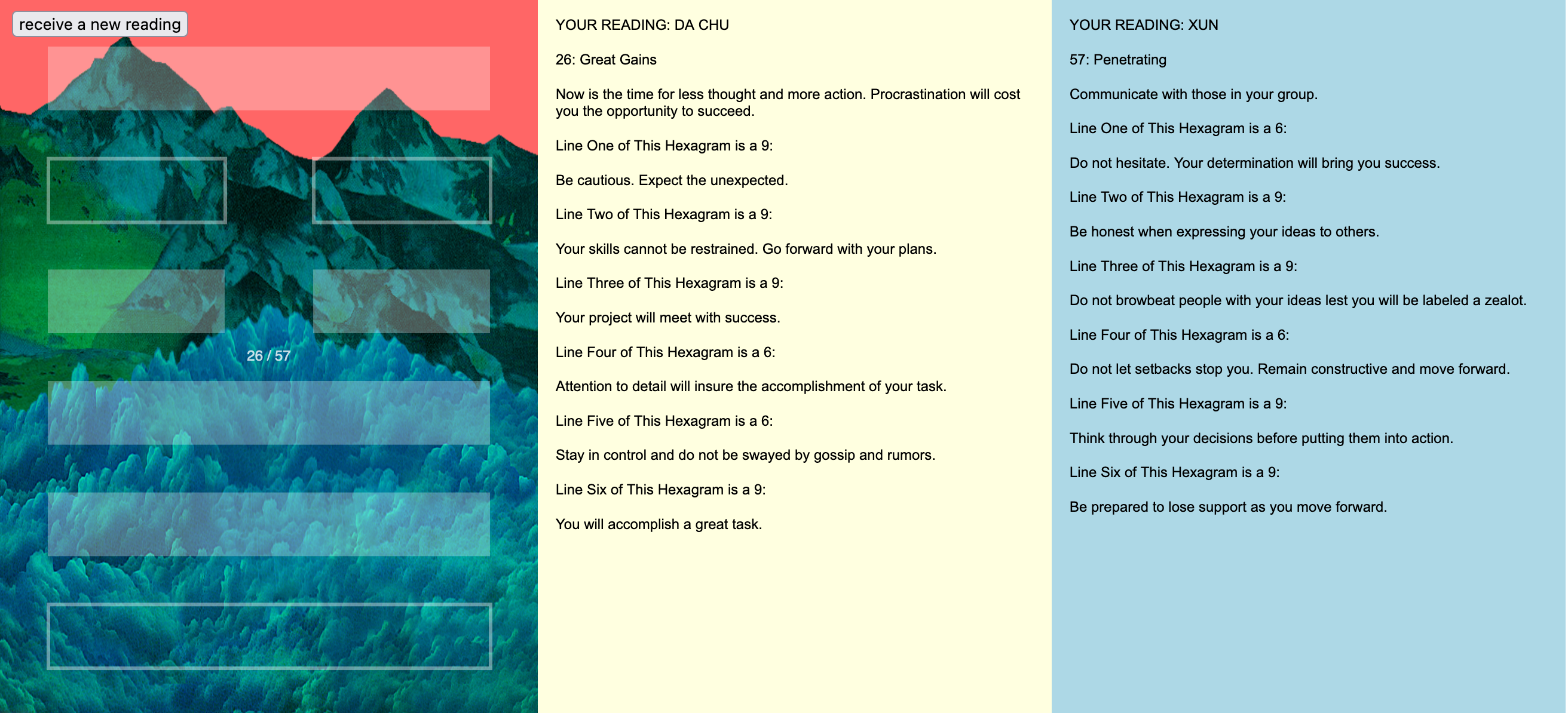
This software generates IChing (Book of Changes) readings for the user. Each image provides a symbolic representation of the resultant hexigram; the images are generated through an algorithm based upon the coin-toss method of IChing divination and Lejaren A. Hiller Jr’s ILLIAC II subroutine ICHING, developed in 1969 at the University of Illinois for the multimedia performance HPSCHD. The text generated onscreen will include pertinent selections from the most popular translations and commentaries of the IChing.
The aesthetic of these generative covers is based on 1970s science-fiction pulp paperbacks. Unlike the cover art of the 1960s, 70s cover art tended toward the more surreal, psychedelic, and symbolic. Many of these artists and authors—Ursula K. Le Guin, Philip K. Dick, Frank Herbert, Roger Zelazny, and many others—found inspiration from Eastern philosophies and religions and helped popularize techno-Orientalism trends that continue to shape issues of race and technology in the present.
- This process is documented in Lejaren Hiller’s article “Programming the I-Ching oracle.” Computer Studies in the Humanities and Verbal Behavior 3 (1970): 130-43.
.jpg)
INTERACTIVE FICTION/TEXT ADVENTURES
2018, websites (HTML5, Processing, Twine, p5.js)

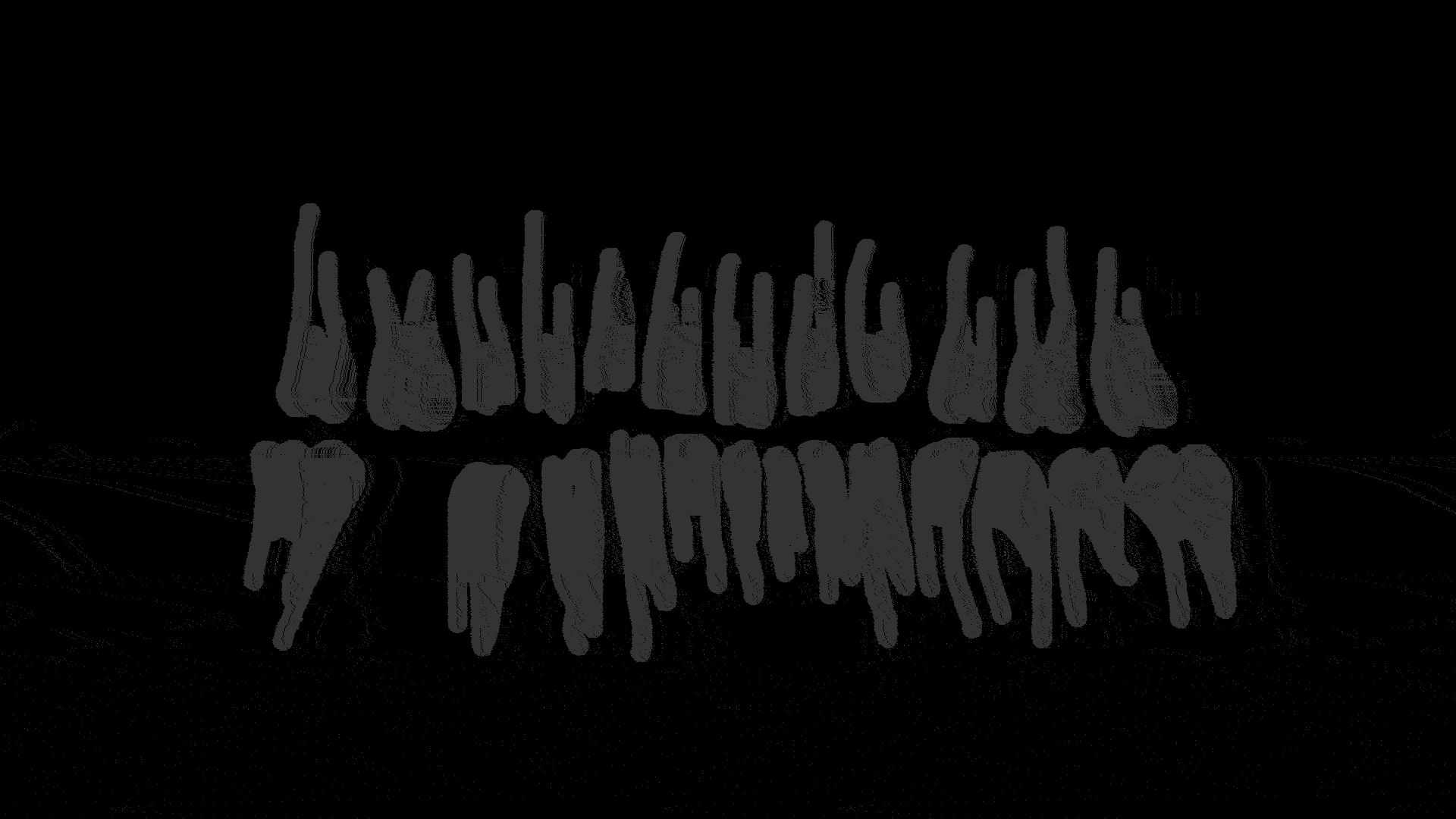
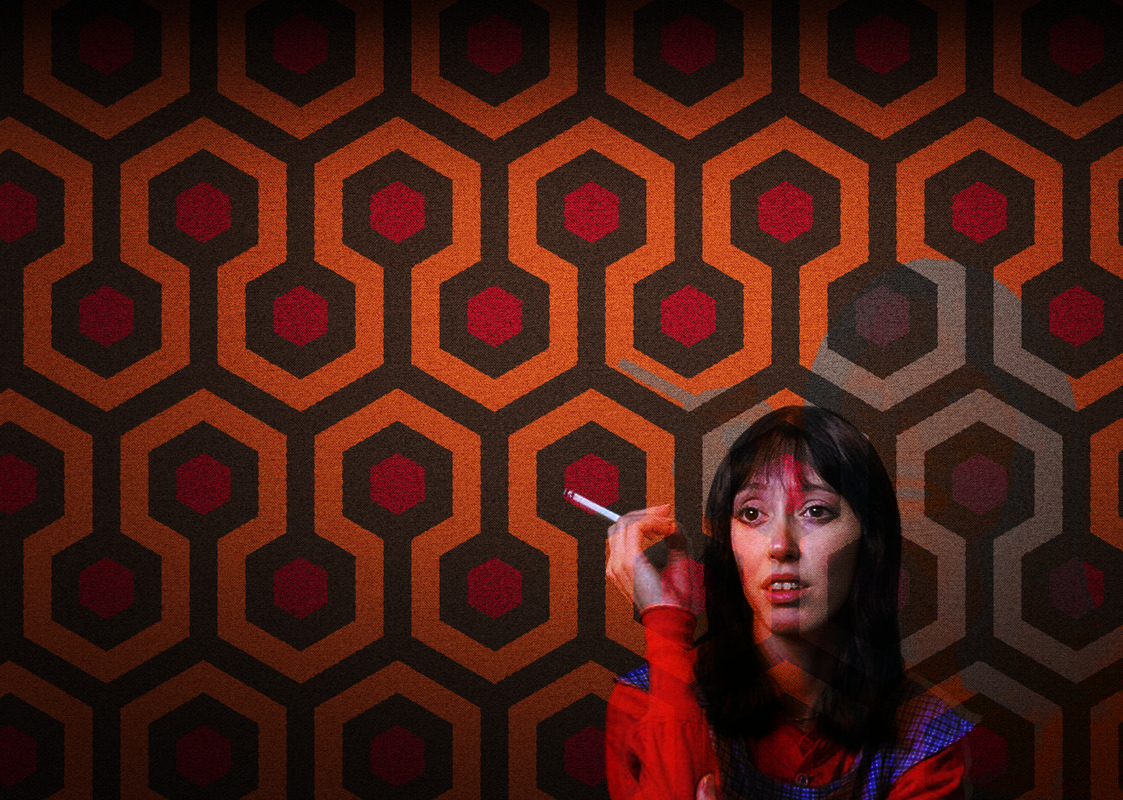
Websites/games/interactive fiction/non-fiction and text adventure experiments:
Pow-Wows; or, Long Lost Friend (Annotated)
TEETH MONSTER
overlooking
murder house
GENERATIVE KALEIDOCOPE
2016, website, custom software
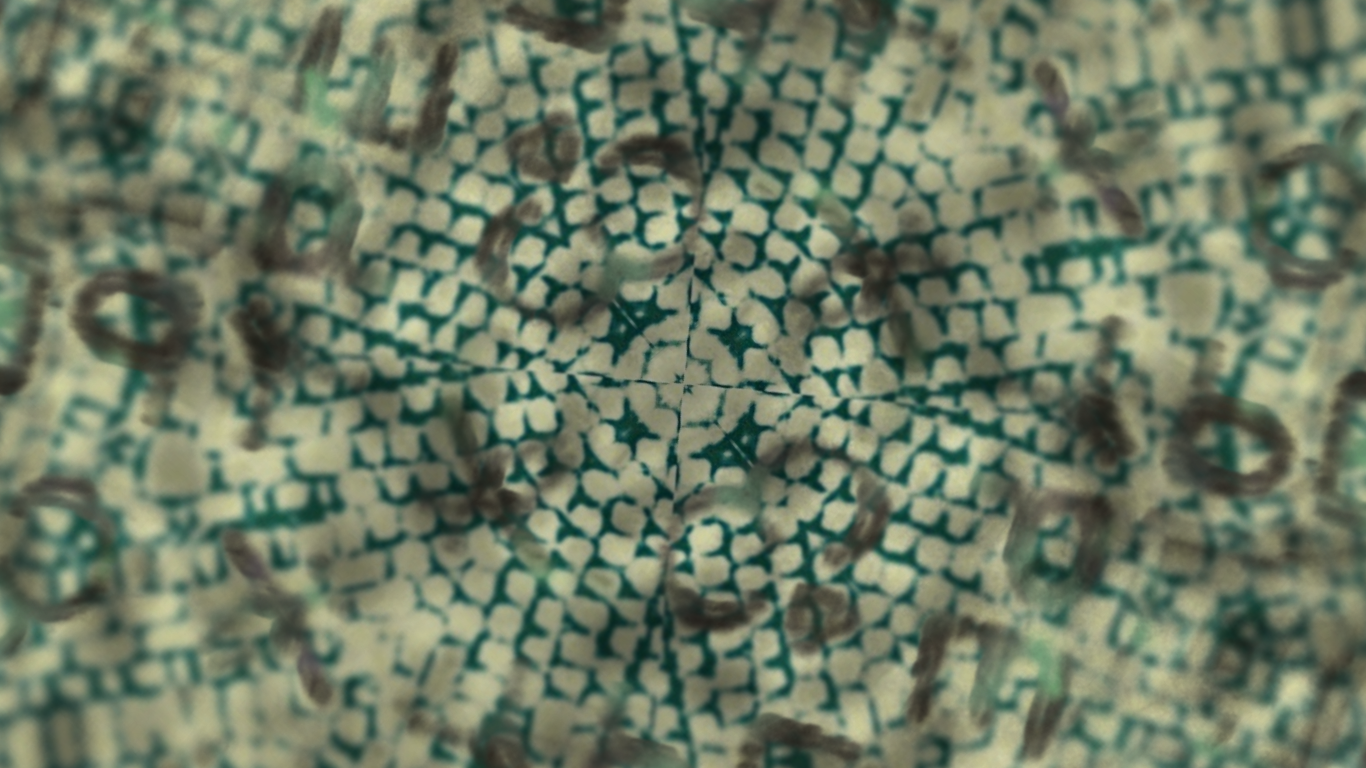
These are tests of a software application, originally coded in Processing and translated to p5.js (javaScript), that collects images using the Instagram API, specified using certain tags (examples: #instakaleidoscopic), and creates generative kaleidoscopic videos from them.
MEMENTO MAURY
2015, custom software, video
Memento Maury is an exploration of gender essentialism and racial/cultural stereotyping in media as evidenced by the long-running daytime talk program The Maury Povich Show. By aggregating data—in this case, screenshots introducing new segments in the program—over the course of 100 episodes, one can see not only how the formulaic aspects of the show emphasize gender and racial tropes, but also how the repetition built in to popular media serves to both reflect and further ossify social and cultural hierarchical structures. Layering effects were created using custom stacking software, built with the open source programming language and development environment Processing. This is a documentation clip of the generative version of Memento Maury, screened for a full week on ACRE TV as part of the AutomataBahn series in November, 2014.
Automatabahn archive @ acretv.org
PISTOL MANDALA
2016, custom software, video
Pistol Mandala is a series of prints and videos produced using custom code. Videos are generative, configuring .tif images of pistols into circular mandala forms for contemplation.
“…AND THE DAY WILL BE BEAUTIFUL”
2016, digital video installation
This video was part of a site-specific installation featured in the Em(body) Exhibition in the Uptown Arts Center. The work celebrates the legacy of Preston Bradley, whose work in the Civil Rights movement in Chicago remains startlingly relevant.
PORTRAITS (TERMINATORS)
2012, custom software, video
Portraits (Terminators) is a video installation of 49 videos of young men’s faces, but with bionic overlays (laser eyes, alloy jaws) on their features a la The Terminator. Each uploaded this content on social networking sites, creating an ad hoc community displaying their 3D tracking and modeling prowess. The tutorial they followed to produce these “portraits” begs the question, Why the Terminator? Why do they transform themselves into a militaristic cyborg, when this software is capable of an infinity of options? Or is it the software that influences the user to create such a figure?
SANS SANS SOLEIL
2010, custom software
This visualization was inspired by Chris Marker’s film Sans Soleil, a loosely woven narrative told through the epistolary relationship between a world traveler and a friend back home. Though the visual format of the film is described through a series of moving images cut together to form a journey through a traveler's memory, the text of the film is largely based off the letters and the inner journey they afford the reader. In this visualization, each phrase of the text is represented by a bounding phrase, or “organism,” that collides with other organisms in its vicinity. Matches of similar words between phrases cause the word to appear and a web to form between organisms. The user, or “traveler,” can “capture” an organism and drag it to find more matches, creating her own webs and thus a whole new narrative experience of the original text. Together both visualization and user construct any number of journeys for the fictive traveler to embrace.
National UFO Reporting Agency reported sitings, 1925-2009
2009, custom software
National UFO Reporting Center reported sitings, 1925-2009 is an attempt to visualize the number and frequency of civilian sitings of various shapes of UFOs as reported to an official government agency. This interactive data visualization consists of two basic interfaces; the first displays the increasing frequency of various UFO shapes from the years 1925 through the present, while the second allows the user to select individual years to explore the frequency of sited shapes. While the colors representing the individual UFO shapes were chosen arbitrarily, the variation in color allows the user to differentiate between different UFOS in both interfaces, whether it be only by color, or both color and shape.